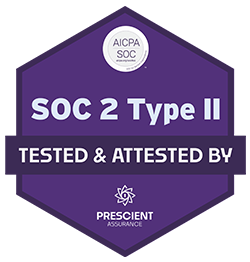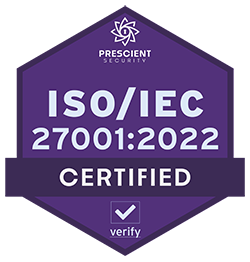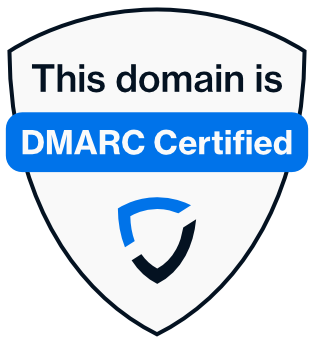Microsoft DMARC requirements: A comprehensive guide
From May 5, 2025, Microsoft mandates that all organizations sending 5 000 or more emails per day to its consumer services must implement DMARC, SPF, and DKIM to authenticate messages.
Senders must publish a DMARC record with at least a p=none policy and ensure alignment between DMARC and either SPF or DKIM. Non-compliance can result in messages being rejected or filtered into Spam folders.
Check out our guide on the Microsoft DMARC requirements to learn more.
Microsoft DMARC requirements explained
DMARC
A DMARC record, with a minimum policy of p=none, must be published for the domain. This tells email receivers how to handle messages that fail SPF or DKIM checks. DMARC must be aligned with either SPF or DKIM, preferably both.
SPF
All outbound emails must pass SPF checks. SPF verifies that an email server is authorized to send messages on behalf of the domain.
DKIM
All outbound messages must pass DKIM checks. DKIM applies a digital signature to verify the message's integrity and authenticity.
Who must comply with the Microsoft DMARC requirements?

Any business sending 5 000 or more messages daily to Microsoft email accounts must meet these requirements.
This includes:
- Internal and hosted email systems
- CRM, ERP, and e-commerce services
- Email marketing platforms
- Transactional emails
- Third-party senders
Failure to comply may result in:
- Increased risk of spoofing and phishing
- Messages being rejected by Microsoft
Sendmarc makes DMARC compliance easy, providing the tools needed to meet evolving requirements.
Book a demo or explore our platform to find out how we simplify DMARC adoption.
Get a copy of the Microsoft DMARC rules
Complete the below form to get this free guide.
Expert insights
“Microsoft’s update is a strong signal that the email ecosystem is maturing. These new requirements aren’t just about compliance—they’re about customer trust. High-volume senders need to step up and treat deliverability and authentication as core parts of their digital brand strategy, not just IT hygiene.”
– Nicolas Blank, Microsoft 365/Entra MVP and Founder of NBConsult
“While Microsoft’s new requirements apply to bulk senders, I believe every domain should have SPF, DKIM, and DMARC in place. These aren’t just technical best practices—they’re essential for protecting deliverability and reputation. Microsoft themselves say it best: ‘All senders benefit from these practices.’ It’s time the industry starts moving in that direction.”
– J. Peter Bruzzese, Microsoft MVP and Co-Founder of ClipTraining
Microsoft DMARC FAQs
Does Microsoft require DMARC?
What does Microsoft require for DMARC compliance?
Is DMARC now a requirement for bulk email senders?
What happens if I don’t have DMARC in place for Microsoft recipients?
If your business doesn’t implement DMARC for its domain, Microsoft might reject its emails. This could result in reduced deliverability and damage to your business’s sender reputation.



